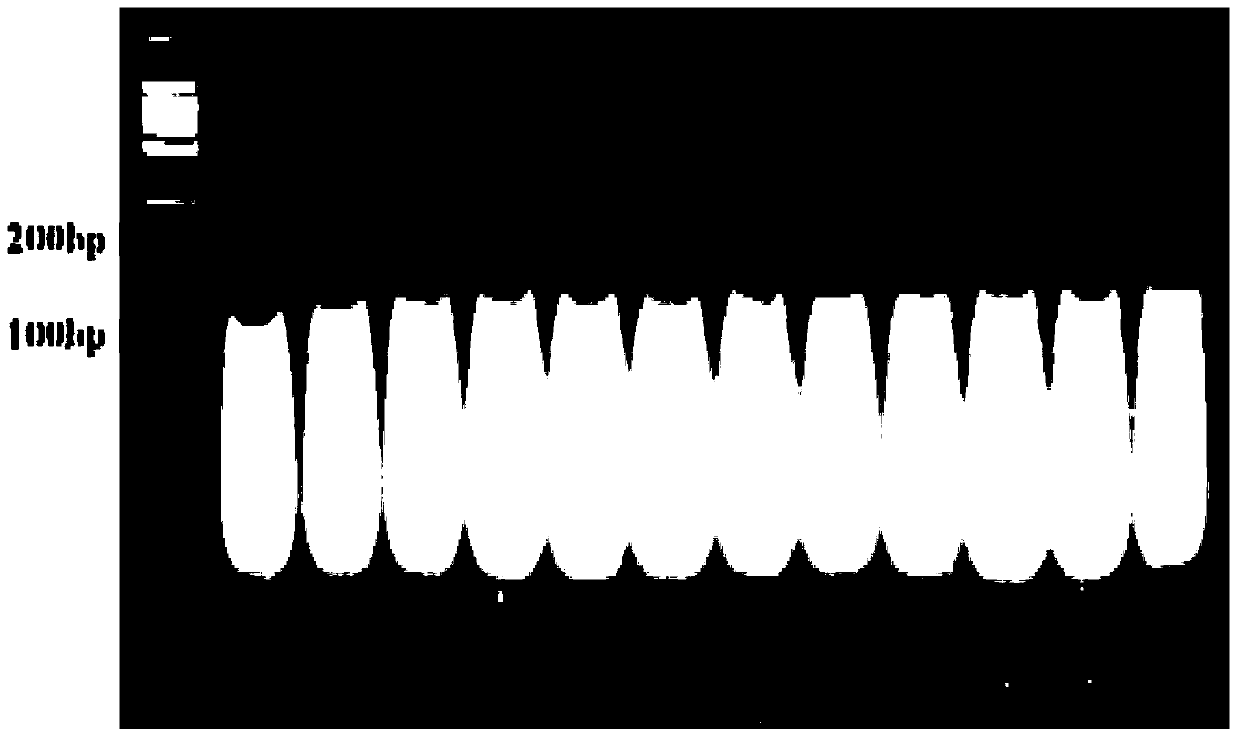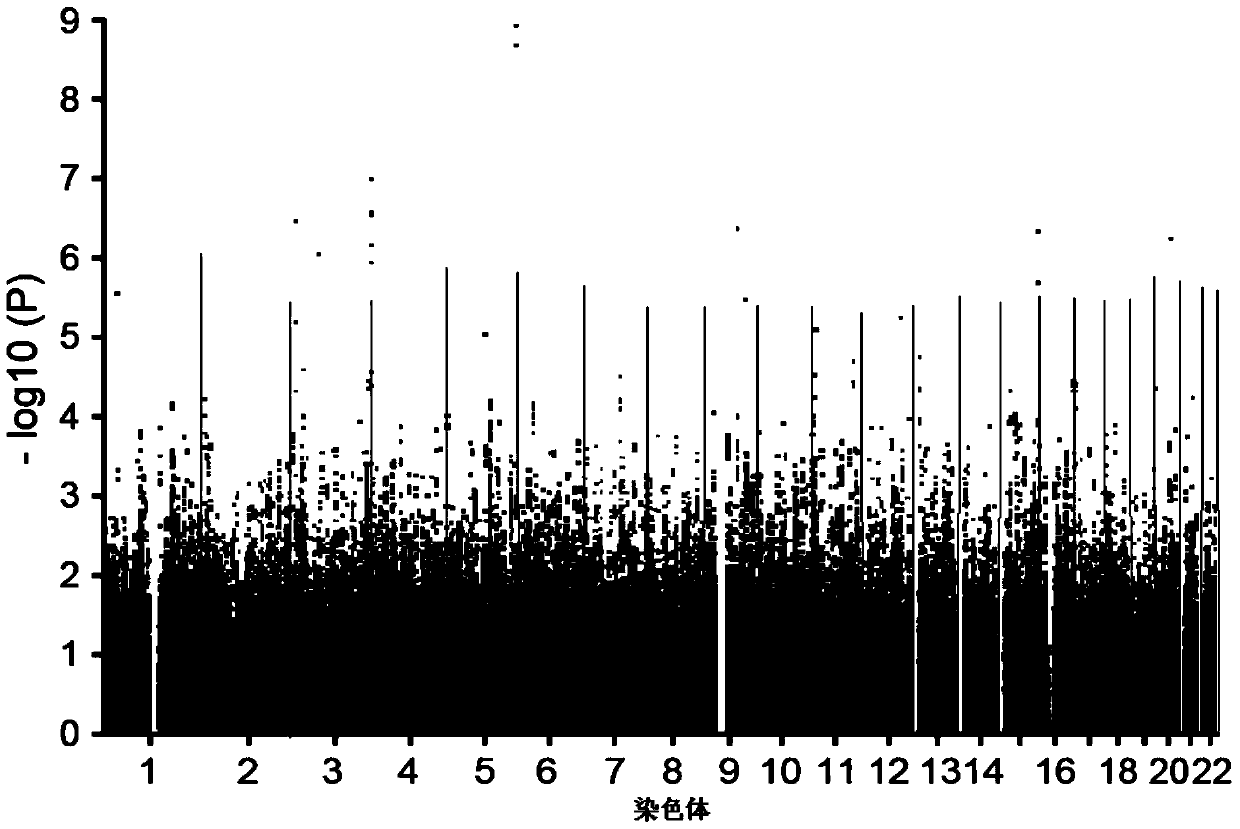Thsd7a gene sequence and expression change detection and its application in the prediction of coronary heart disease
一种DNA序列、冠心病的技术,应用在THSD7A基因序列及表达改变检测及其在冠心病预测中的应用领域,能够解决易感基因缺乏有效的方法、不足以解释冠心病遗传基础等问题,达到降低发病率的效果
- Summary
- Abstract
- Description
- Claims
- Application Information
AI Technical Summary
Problems solved by technology
Method used
Image
Examples
Embodiment 1
[0069] Example 1: Genome-wide screening of coronary heart disease susceptibility loci:
[0070] Experimental population
[0071] In this example, the patients with coronary heart disease (coronary angiography positive), that is, the samples and case data of the coronary heart disease case group came from the General Hospital of the Chinese People's Liberation Army, and the samples and data of the control group came from the Beijing Physical Examination Center. All samples from the population participating in the experiment were notified in writing, and informed consent was signed by themselves or their family members. The experimental operation followed the ethical principles stipulated in the "Declaration of Helsinki" and was reviewed and approved by the Peking University Ethics Committee.
[0072] Among them, the selection criteria for samples from the coronary heart disease case group meet one of the following three conditions:
[0073] (1) Previous medical history of myo...
Embodiment 2
[0299] Multi-center verification of embodiment 2 rs17165136 locus
[0300] In order to further verify the rs17165136 single nucleotide polymorphism site in Example 1, this example will carry out multi-center verification on the above site. The method used for verification is still the combination of LCR and direct sequencing. The specific operation is as follows:
[0301] research population
[0302] The samples and data of patients with coronary heart disease (positive coronary angiography) used in the experiment came from the Affiliated Hospital of Harbin Medical University, China-Japan Friendship Hospital, Fuwai Hospital, and the First Affiliated Hospital of Zhengzhou University. The control samples and data came from the physical examination centers in Northeast and North regions that matched the regions of the cases; the case samples and data verified by the southern population came from the First People's Hospital of Jiangsu Province, the First People's Hospital of Nin...
Embodiment 3
[0315] Example 3 Identification of susceptibility genes
[0316] Unlike many SNP sites found in GWAS located in gene deserts, the rs17165136 site identified in this application is located in the THSD7A intron region, so the inventors hypothesized that the THSD7A gene may be a susceptibility gene for coronary heart disease. And verify it through this embodiment.
[0317] research population
[0318] The population used for eQTL analysis of THSD7A gene came from the Beijing Physical Examination Center. All samples from the population participating in the experiment were notified in writing, and informed consent was signed by themselves or their family members. The experimental operation followed the ethical principles stipulated in the "Declaration of Helsinki" and was reviewed and approved by the Peking University Ethics Committee.
[0319] cell culture
[0320]Human embryonic kidney cell line HEK293A was preserved by this experiment; primary human umbilical vein endothelia...
PUM
 Login to View More
Login to View More Abstract
Description
Claims
Application Information
 Login to View More
Login to View More - R&D
- Intellectual Property
- Life Sciences
- Materials
- Tech Scout
- Unparalleled Data Quality
- Higher Quality Content
- 60% Fewer Hallucinations
Browse by: Latest US Patents, China's latest patents, Technical Efficacy Thesaurus, Application Domain, Technology Topic, Popular Technical Reports.
© 2025 PatSnap. All rights reserved.Legal|Privacy policy|Modern Slavery Act Transparency Statement|Sitemap|About US| Contact US: help@patsnap.com



